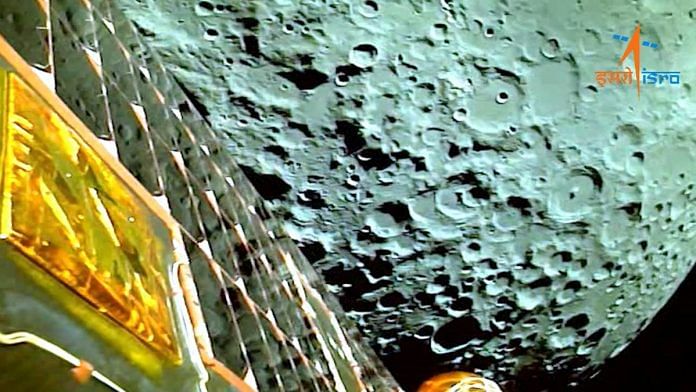New Delhi: Former Indian Space Research Organisation (ISRO) director K. Sivan said Monday Chandrayaan-3 – expected to touchdown on the moon at 6.04 pm on 23 August – was more “rugged” than the previous mission which had failed to soft-land the lander Vikram on the lunar surface.
“We went through the data after the landing process of Chandrayaan-2… Corrective measures have been taken… we did more than we corrected… Wherever margins were less, we enhanced those… based on the lessons we learnt from Chandrayaan-2, the system this time is going with more ruggedness,” Sivan said.
#WATCH | Bengaluru: On Chandrayaan 3 mission, former director of ISRO, K Sivan says, "Last time after the landing process, we had gone through the data…Based on that, corrective measures have been taken. Not only that, we did something more than what we corrected. Wherever the… pic.twitter.com/zC1dAcMXnF
— ANI (@ANI) August 21, 2023
During the Chandrayaan-2 mission in 2019, the lander crashed on the moon. This, in turn, failed to release the rover Pragyaan – designed for an on-site analysis of the lunar surface.
Professor Radhakant Padhi, Aerospace Scientist of the Indian Institute of Science told NDTV that Chandrayaan-2 failed as Vikram could not control its speed and tumbled. “There was an algorithm failure, which has now been corrected. Vikram Landers legs are more robust now,” he said.
Radhakant Padhi has been involved with the launch of both Chandrayaan-2 and 3, the report said, adding that the Aerospace department of the Indian Institute of Science, Bengaluru, was contributing to the moon mission.
Padhi said ISRO scientists were “overconfident” in the Chandrayaan-2 mission, and that Chandrayaan-3 “should land even if everything goes wrong”.
Chandrayaan-3 is designed for six “sigma bounds”, so it’s more robust, he said, adding: “Chandrayaan-3 has been stress tested, ISRO has taken care of all known unknowns”.
The Vikram lander has two on-board computers, while there was only one in Chandrayaan-2, the professor said.
On Monday, ISRO released images of the lunar far side area captured by the Lander Hazard Detection and Avoidance Camera (LHDAC).
This camera assists in locating a safe-landing area — without boulders or deep trenches — during the descent. It has been developed by Ahmedabad-based Space Applications Centre (SAC), a major research and development centre of ISRO.
According to the space agency, to achieve the mission objectives of Chandrayaan-3, several advanced technologies are present in the lander such as LHDAC.
Chandrayaan-3, launched on 14 July, is a follow-on mission to Chandrayaan-2 to demonstrate end-to-end capability in safe landing and roving on the lunar surface.
Also read: Moon landing anticipation builds for India after Russia’s crash



